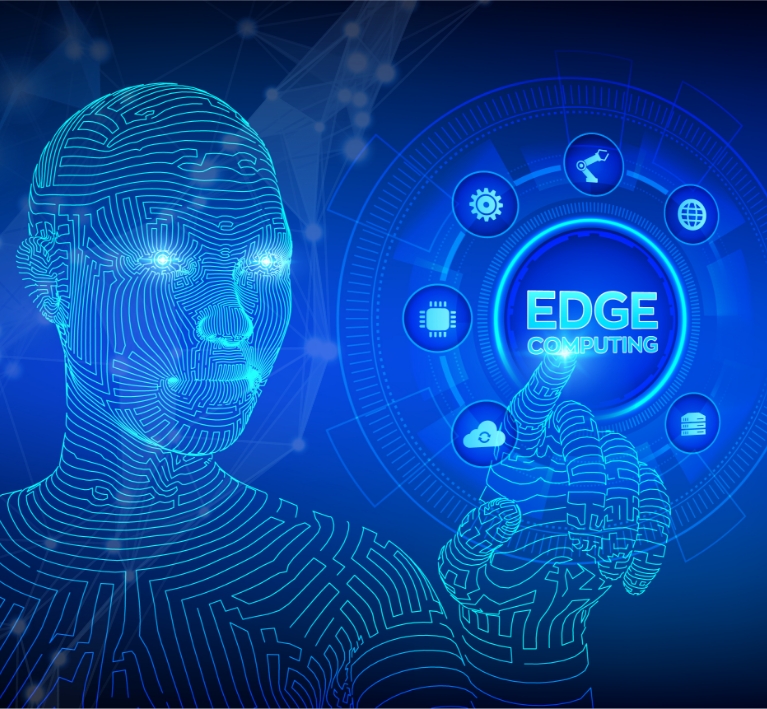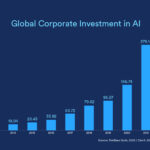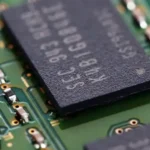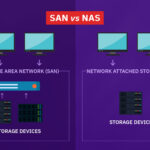The AI Revolution: From the Cloud to the Edge
For years, the story of AI has been intrinsically linked to the cloud. We’ve seen massive, powerful models trained on colossal datasets in distant data centers, delivering incredible results in everything from language translation to medical diagnosis.
- The AI Revolution: From the Cloud to the Edge
- Why the Cloud-Only Model Isn’t Enough Anymore
- The Synergy: How Edge Computing Transforms AI
- Practical Applications: Where Edge AI is Making a Difference
- A Look Ahead: The Future of AI is Hybrid
- Practical Tips: How to Apply Edge AI Principles in Your Daily Life
- Ready to Explore the Edge?
This cloud-centric model has enabled a golden age of artificial intelligence, providing the immense computational power needed for complex tasks. However, as AI becomes more ubiquitous and the Internet of Things (IoT) explodes, a new paradigm is taking hold: Edge Computing.
This shift is not just an evolution; it’s a fundamental transformation that is reshaping how we think about and deploy AI. It’s about moving the intelligence from the centralized cloud to the very devices where data is created at the edge of the network.
Why the Cloud-Only Model Isn’t Enough Anymore
While cloud-based AI is still essential for training large models, it has a few critical limitations for real-world, real-time applications. The most significant issue is latency.
Sending data from a device to the cloud, processing it, and sending the result back takes time. In applications like self-driving cars or industrial automation, where a millisecond delay could mean the difference between a safe outcome and a catastrophe, this round-trip time is simply unacceptable.
Furthermore, the sheer volume of data generated by modern devices like high-resolution cameras in smart cities or thousands of sensors in a factory can overwhelm network bandwidth.
Constantly streaming this raw data to the cloud is costly and often impractical. Beyond that, transmitting sensitive data, such as medical records or personal security footage, to a remote server introduces significant privacy and security risks.
Local processing at the edge keeps this data secure and private, addressing major concerns for industries like healthcare and finance. Lastly, a cloud-dependent system grinds to a halt when the internet connection is slow, intermittent, or completely down.
Edge AI can function autonomously, making it far more resilient and reliable in remote or unstable environments.
The Synergy: How Edge Computing Transforms AI
The fusion of AI and Edge Computing creates a powerful synergy that unlocks new possibilities across a multitude of industries. This combination enables true real-time decision-making, which is arguably its most significant benefit.
In autonomous vehicles, for instance, Edge AI processes data from LiDAR and cameras instantly to detect obstacles and navigate safely.
In manufacturing, it can spot defects on a production line in milliseconds, preventing costly errors. This local processing also leads to dramatic bandwidth efficiency. By processing data locally, only key insights or actionable results are sent to the cloud.
A smart camera, for example, won’t stream constant video; it will only send a small alert when it detects a specific event, like an intruder. This drastically reduces bandwidth usage and associated costs. For highly sensitive applications, Edge AI ensures that data never leaves the device or local network.
A smart healthcare device can analyze patient vitals and send a simple alert to a doctor without ever exposing private patient information to a public cloud, enhancing data privacy and security.
Practical Applications: Where Edge AI is Making a Difference
The impact of Edge AI is already being felt in a wide range of fields, transforming operations and creating new possibilities. In the automotive industry, self-driving cars are the quintessential example.
Onboard computers process data from multiple sensors, cameras, radar, GPS in real-time to make critical navigation decisions without relying on a remote connection.
Similarly, in manufacturing and industrial IoT, Edge AI enables predictive maintenance, where sensors on machinery can detect subtle anomalies and predict a failure before it occurs, preventing costly downtime.
It also powers quality control, with AI-driven cameras spotting defects faster and more accurately than the human eye. In urban environments, smart cities leverage Edge AI for everything from optimizing traffic flow with smart traffic lights to enhancing public safety by detecting suspicious behavior with cameras that process data locally.
Healthcare is another crucial area; wearable devices and remote patient monitors use Edge AI to continuously analyze vital signs and send immediate alerts in case of an emergency, all while keeping sensitive health data private.
A Look Ahead: The Future of AI is Hybrid
The future isn’t about choosing between the cloud and the edge; it’s about a hybrid model where they work together seamlessly. The cloud will remain the ideal place for training massive, complex AI models. It offers the scalable compute and storage needed to crunch huge datasets and refine algorithms.
Once an AI model is trained, it can be deployed to the edge, where it can perform real-time inference and make immediate decisions. This creates a powerful, two-way loop: the edge devices provide the data for continuous model improvement, and the cloud delivers updated, more intelligent models to the edge.
This iterative process ensures that our AI systems are constantly learning and evolving, creating a dynamic and powerful ecosystem. This is the future of AI, a system that combines the best of both worlds—the immense power of the cloud with the speed and efficiency of the edge.
Practical Tips: How to Apply Edge AI Principles in Your Daily Life
You don’t need to be a data scientist or an engineer to appreciate or even leverage the concepts of Edge AI. Many modern smartphones use Edge AI for tasks like real-time image processing (think Portrait Mode), on-device voice recognition (like Siri or Google Assistant), and personalized app suggestions.
The next time you take a picture with a filter or get a quick voice command response, you’re experiencing Edge AI in action. The increasing intelligence of devices like smart speakers and security cameras is another great example. They often process basic commands and detect motion locally before sending any data to the cloud, making them faster and more secure.
The rise of Edge AI also brings a new level of control over your data. Look for devices and applications that advertise on-device or local processing. This means your personal information isn’t constantly being sent to a third-party server, giving you greater privacy and peace of mind.
Exploring gadgets that highlight their “on-device AI” capabilities, like certain smartwatches that can analyze your health metrics without an internet connection, is a great way to see these principles firsthand.
Ready to Explore the Edge?
Edge Computing is more than a technical trend; it’s a foundational shift that is making AI faster, safer, and more accessible than ever before. It’s moving intelligence from the abstract world of the cloud to the physical world around us, enabling devices to perceive and respond to their environment with unparalleled speed and autonomy.
As this technology matures, its applications will continue to grow exponentially, transforming industries and improving our daily lives in ways we can only begin to imagine.








